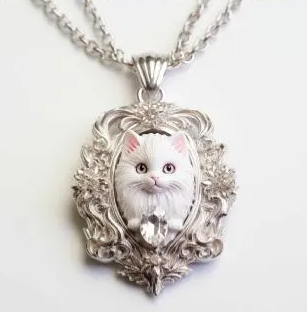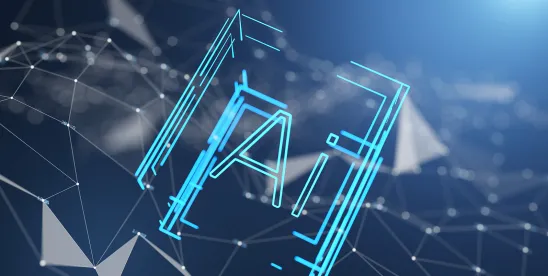On September 16, 2025, the Beijing Internet Court announced a recently upheld decision in which they held that while copyright can exist in AI-generated images, the author must “demonstrate that they have exerted creative effort in their AI-generated creations, reflecting personalized expression…When asserting rights in AI-generated works, authors are obligated to explain their creative thinking, the content of their input commands, and the process of selecting and modifying the generated content, and to submit relevant evidence.”4

AI-generated cat pendant image at issue.
This case involved a copyright infringement dispute heard by the Beijing Internet Court, between Zhou, a content creator, and an unnamed Beijing Technology Company. Zhou claimed to have independently created an AI-generated image titled “Cat Crystal Diamond Pendant” using AI image generation software (presumably Midjourney) during a business partnership with the defendant company, publishing the image in a WeChat group chat. Zhou discovered the defendant using the image without permission across multiple platforms for promotional purposes in October 2023 and again in March 2024, leading to claims for copyright infringement of attribution rights and network transmission rights, along with demands for economic damages and a public apology .
The defendant contested Zhou’s ownership, arguing that the image was not Zhou’s original creation and that both parties had collaborated on material selection and AI prompts. The defendant maintained that Zhou could not prove the creative process or originality, and denied any commercial use or profit motive. The critical evidentiary issue arose from Zhou’s failure to provide actual generation process records from the AI software, instead offering only post-hoc recreation attempts using the same AI software during litigation. The court found this “after-the-fact simulation” insufficient to prove the original creative process, noting that it was merely a post-hoc description of the image in question using the descriptive word generation function within the AI software, rather than a reproduction of the original prompts or generation commands.
The court emphasized that for AI-generated content copyright claims, the burden of proof follows the “whoever asserts, whoever provides evidence” principle, requiring users to demonstrate their creative thought process, input prompts, selection and modification process of generated content, and evidence of creative labor investment.
Accordingly, the Beijing Internet Court ruled for the defendant and this was upheld on appeal.
Judge Wang Yanjie commented:
In recent years, the total number of intellectual property cases involving artificial intelligence and big data accepted by the people’s courts has not been large, but has grown rapidly. This reflects the important role of scientific and technological innovation in spawning new industries, new models, and new momentum, and also reflects the urgent need for judicial “determination of disputes” in intellectual property. This case mainly clarifies that the judgment of the “originality” of AI-generated products should adhere to the general principle of “he who claims, who shall provide evidence” in the allocation of the burden of proof, and that creators must fulfill their obligation to explain the creative process. This can be understood specifically from the following two points:
First, the burden of proof for originality for AI-generated content and traditional copyrighted content is essentially the same, with both upholding the general principle of “he who asserts, must provide proof” for allocating the burden of proof. However, compared to painting with traditional tools like brushes and software, the process of generating content using AI requires significantly less intellectual effort. Therefore, whether this process demonstrates originality requires a more case-by-case assessment to determine whether the creator has invested original intellectual effort in the process.
Secondly, in terms of specific forms of evidence, when claiming rights to AI-generated content, creators can explain their creative thinking, the content of input commands, and the process of selecting and modifying the generated content by combining prompts, iterative processes, sketches, selection records, and modification records. This relevant evidence should essentially provide a basis for determining whether and what kind of creative labor the user exerted in the process of generating content using AI.
In addition, we recommend that content creators establish a sense of “leaving traces of the process” and keep detailed generation records as the basis for asserting rights; we also recommend that relevant industries and industry players further enhance the computing, generation, and traceability capabilities of artificial intelligence models, participate in the collaborative governance of “technology + system + industry”, and assist in accelerating the implementation of regulations such as the “Measures for Identifying Synthetic Content Generated by Artificial Intelligence” to avoid the abuse of the copyright system and truly realize the original intention of “empowering and promoting innovation.”
In late 2023, the Beijing Internet Court first recognized copyright protection for AI-generated images in Li v. Liu.
The original announcement is available here (Chinese only).



 />i
/>i

